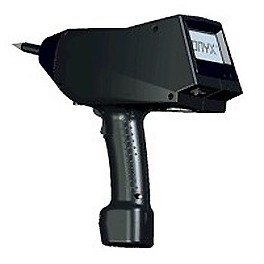No products
Product successfully added to your shopping cart
There are 0 items in your cart. There is 1 item in your cart.
Categories
Best sellers
-

Schaffner / Teseq NSG 435 ESD Simulator for IEC 61000-4-2
Programmable discharge voltage 200 V to 16.5 kV Stabilized charging...
$590.00 -

ESDGuns.com GRC Series Ground Cable w/ 470k Ohm Resistors for ESD Voltage Bleeding
Ideal for voltage bleeding to Ground Plane during Indirect ESD Immunity...
$199.00 -

Rent Keytek Minizap MZ-15/EC 15kV ESD Simulator Gun
Rentals Ship Immediately Purchase Options See: Used Keytek Minizap ESD...
$495.00 -

ESD Guns IF Insulating Foil for ESD Compliance Testing
Suitable for EN/IEC 61000-4-2 ESD immunity compliance testing...
$197.00 -

Teseq / Schaffner INA 405 Ni-Mh Battery Pack Refurbishment for NSG 435 ESD Gun
ESD Guns can refurbish your existing INA 405 battery pack. Expected...
$275.00 -

Haefely ONYX 16 kV ESD Generator Gun
Rental Package IncludesAir and Contact Discharge Tips Output...
$595.00 -

Teseq NSG 437 Electrostatic Discharge (ESD) Simulator Gun for GR-1089 & IEC 61000-4-2
Air- and contact-discharge to 30 kV Color touch panel control Advanced...
$895.00 -

3ctest EDS 20H Hand-held 20kV Electrostatic Discharge ESD Simulator
Air- and Contact- Discharge: 1000 Volts - 20kV ±5% Rise time: 0.6-1ns RC...
$476.00
Mil-STD-331 F1: Environmental and Performance Tests for Fuze and Fuze Components - Electrostatic Discharge (ESD)
MIL-STD-331 personnel borne ESD testing requires two discharge networks, R/C capabilities 500pF/500Ohm and 500pF/5kOhm, along with a 30kV ESD generator. Accessories are also available to isolate the discharge tip from the main unit of the ESD generator (isolatiing the Fuze from the user), shielded environments are also available.
Scope of MIL-STD-331
This standard describes tests used by the Department of Defense (DoD) to determine the safety, reliability and performance characteristics of weapon system fuzes and fuze components at any stage in their life cycle.
History
MIL-STD-331A - Released October 15, 1976
MIL-STD-331B - Released December 1, 1989
MIL-STD-331C - Released January 5, 2005 (no significant changes to ESD)
ESD Generators for MIL-STD-331
Teseq NSG 438 ESD Simulator Gun | |
 | Features:
|
Haefely ONYX 30 kV ESD Gun | |
 | Features:
|
Test Parameters for MIL-STD-331
Testing to be performed in positive and negative polarities
| Source of Threat | Voltage Across Capacitance | Capacitance | Resistance | Discharge Induction |
| Personnel | 20kV ±5% | 500 pF ±5% | 5000 Ohms | <5 uH |
| Personnel | 20kV ±5% | 500 pF ±5% | 500 Ohms | <5 uH |
| Helicopter | 300kV ±5% | 1000 pF ±10% | 1 max* | <20 uH |
*Total distributed discharge circuit resistance measured with and accuracy

